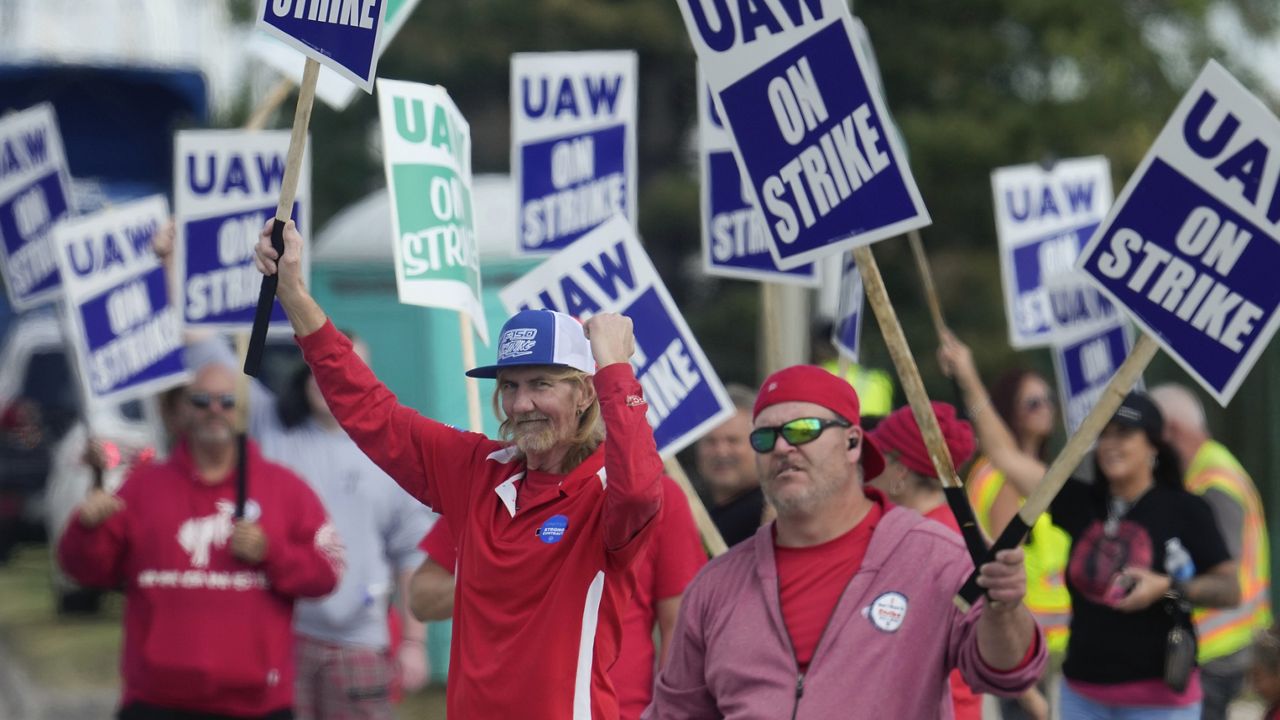Four days after 12,700 workers began targeted strikes against Ford, General Motors and Stellantis factories, United Auto Workers President Shawn Fain said contract negotiations still “have a long way to go.”
Fain told National Public Radio on Monday that he had “minimal conversations” with Ford and General Motors over the weekend and will meet with Stellantis Monday as the two sides work to resolve their differences over worker pay and benefits.
The UAW is demanding a pay increase of at least 36%. Ford and General Motors have offered 20%. Stellantis has offered 21%.
“It’s not enough,” Fain said, adding that over the past four years of the workers’ now-expired contract, the companies' profits increased 65%, CEO pay increased 40%, vehicle prices rose 34% and inflation increased 20% while UAW wages increased 6%.
Fain said that it is “up to the companies” whether the UAW will expand its stand up strike to other plants. On Friday, workers walked out at a GM assembly facility in Wentzville, Mo.; a Ford assembly plant in Wayne, Mich.; and a Stellantis factory in Toledo, Ohio. The plants make some of the companies’ most popular vehicles, including the Chevrolet Colorado pickup truck, Ford Bronco and Jeep Wrangler.
The UAW presented each of the car companies with a list of ten demands in July, when negotiations first began. In addition to wage increases, the UAW is demanding cost-of-living adjustments, defined pension benefits for all workers, the right to strike over plant closures and more paid time off to be with families.
“People have to understand where our workers have been,” Fain said.
Fain said that UAW workers are still suffering the consequences of decisions made during the Great Recession of the late 2000s, when the federal government bailed out General Motors and the company formerly known as Chrysler while workers "sacrificed our cost-of-living allowance, we lost retirement security, job security."
With two of the Big Three Detroit automakers in bankruptcy, the companies were able to leverage their precarious financial positions with UAW contracts that reduced worker pay and benefits.
“It was a good argument at the time: we pay you this or nothing because we go out of business,” iSeeCars.com Executive Analyst Karl Brauer told Spectrum News. “That was a valid point in 2008. Then we came out of the recession and we’ve had ten years of the best profits the U.S. automakers have seen after negotiating a lower-cost contract with the UAW.”
Brauer said it’s likely the next five to ten years in the auto industry with be rougher for automakers because of higher inflation, higher interest rates and mandated EV requirements.
“What drove us to where we are now is creating a big tension between these two entities for good reason,” Brauer added.
As the strike continues, Ford has told 600 of its workers not to show up for their jobs at the factory where the UAW is striking its paint operations. General Motors says it may need to do the same at an assembly plant in Kansas that relies on materials from the Missouri plant where UAW workers are also striking.
“That’s a choice the companies made,” Fain said about Ford and GM idling their workers. “The companies didn’t have to lay these workers off. They’re trying to intimidate workers, but we’ll take care of our workers no matter what we have to do.”



